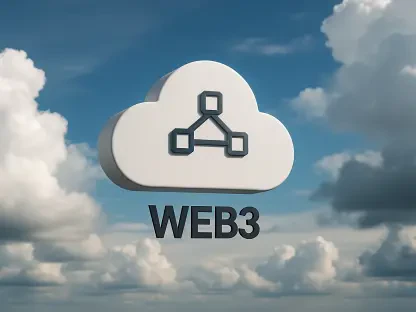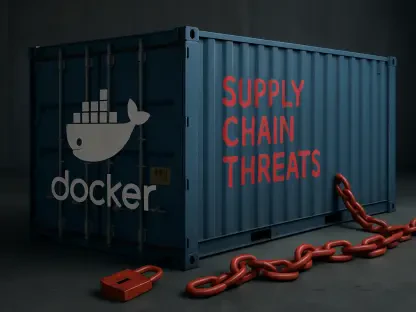As companies navigate the intricate landscape of data privacy and compliance in the cloud era, hybrid Software as a Service (SaaS) deployments are presenting themselves as a compelling solution. This article explores the dynamic between traditional on-premises data centers, modern cloud infrastructure, and the rising prominence of hybrid SaaS in corporate data management. Jason Purviance, CIO of ModeOne, delves into the advantages and potential drawbacks of this approach, offering insights into what lies ahead for organizations striving to manage their data effectively.
The Decline of Traditional On-Premises Data Centers
The traditional on-premises data centers that have been the cornerstone of enterprise IT for decades are witnessing a noticeable decline as organizations increasingly migrate to cloud infrastructures provided by tech giants such as Amazon Web Services (AWS), Microsoft Azure, and Google Cloud Platform (GCP). This migration is driven by the need for scalability, cost efficiency, and the agility that cloud environments afford. The pivotal shift is evident in the growing number of enterprises opting for cloud solutions to benefit from the flexibilities and efficiencies they offer compared to maintaining physical data centers.
The Covid-19 pandemic further accelerated this transition. With a significant portion of the workforce moving to remote work, the demand for scalable, flexible, and accessible cloud solutions skyrocketed. The cloud offers flexible resource allocation, global accessibility, and a pay-as-you-go model that aligns costs with actual usage, thereby making it an attractive alternative to on-premises setups. These cloud-based systems allowed organizations to recalibrate their resource allocation efficiently to meet variable workloads and the sudden surge in data processing demands witnessed during the pandemic era.
The Rise of Vendor-Managed SaaS Solutions
Alongside the general migration to cloud services, there has been an uptick in the adoption of vendor-managed SaaS solutions. These solutions ease the enrollment process, reduce the need for internal IT management, and promise continuous updates without the overhead of manual installations. SaaS applications like CRM systems, ERP platforms, and collaboration tools have become the backbone of many enterprises’ operational frameworks. They offer various benefits, including reducing operational costs and enhancing employee productivity by providing seamless application access across different locations and devices.
However, the convenience of vendor-managed SaaS applications comes at a cost. When enterprises entrust sensitive data to third-party SaaS providers, questions arise about the control and security of that data. This includes customer information, proprietary business data, and regulated data such as electronic protected health information (ePHI). The reliance on third-party vendors brings concerns about data privacy, compliance with evolving regulations, and potential security breaches. Organizations must navigate the delicate balance of leveraging the advantages of vendor-managed SaaS solutions while maintaining stringent data controls and adherence to privacy regulations, which often necessitate extensive due diligence regarding vendor capabilities and contractual obligations.
The Hybrid SaaS Model
The hybrid SaaS model is emerging as a potential solution for these concerns, blending the benefits of both on-premises and cloud deployments. Although the concept of hybrid SaaS isn’t entirely new, it has gained traction as organizations strive to maintain control over their data while leveraging the benefits of SaaS. By adopting a hybrid SaaS approach, companies can enjoy the flexibility of cloud-based applications while simultaneously managing the infrastructure and data within their controlled environments, thus alleviating some of the trust and compliance issues associated with fully vendor-managed SaaS models.
Hybrid SaaS involves deploying SaaS applications within an organization’s own cloud environment rather than relying solely on the vendor’s cloud infrastructure. By doing so, enterprises can manage the underlying infrastructure and data, ensuring compliance with data privacy regulations and enhancing their security posture. This model allows organizations to decide where and how their data is stored while leveraging SaaS provider applications’ seamless integration and functionality. The ability to control and customize the deployment environment aligns with varied regulatory and compliance requirements, ensuring significant data privacy and security levels.
To illustrate, imagine deploying a cloud-based CRM system within your own corporate cloud. The servers and databases are set up from a single deployable package available in a cloud marketplace, and updates are applied according to your schedule. This approach allows you to control your client records, ensuring they are stored in a secure and managed environment without the burden of managing physical hardware or performing database updates manually. This hybrid approach bridges the gap between efficiency and control, offering organizations the best of both worlds in managing their critical data systems.
Advantages of Hybrid SaaS Deployments
Enhanced Data Privacy and Compliance
Data privacy is a paramount concern for enterprises, especially with the increasing complexity of regulations like GDPR and CCPA. Data breaches and the tightening grip of global data protection laws put immense pressure on organizations to safeguard sensitive information. Traditional SaaS models often require companies to relinquish control over their data to third-party vendors, introducing compliance risks and potential unauthorized access. This potential loss of control can be a critical limitation when dealing with sensitive, regulated data, necessitating more secure and customized approaches.
A hybrid approach allows enterprises to reclaim authority over their data by deploying SaaS applications within their own cloud infrastructure. This ensures adherence to stringent data privacy laws, residency requirements, and reinforces customer trust by demonstrating a committed stance on data protection. Enterprises can mitigate the risks associated with third-party data handling and gain more control over their compliance strategies, thus enhancing their ability to safeguard critical data assets against unauthorized access and breaches.
Improved Security Posture
Managing the application infrastructure within a hybrid model empowers organizations to implement their own security protocols, monitor for threats, and respond swiftly to incidents. This reduces reliance on third-party security measures which may not align with the company’s risk management strategies. While it may seem like a step back towards managing infrastructure, it’s a necessary measure to enhance security control and oversight. Implementing tailored security protocols allows businesses to respond dynamically to specific threats and align their security measures with organizational needs and vulnerabilities.
Moreover, this approach supports the integration of robust monitoring and threat-detection mechanisms within the enterprise’s control. By monitoring and managing their data environments, companies can promptly address potential vulnerabilities, execute timely security patches, and investigate anomalies to prevent breaches. This enhanced control over security infrastructure constitutes a significant advantage of adopting a hybrid SaaS model, thereby reinforcing the organization’s overall data protection posture.
Flexible Updates and Maintenance
SaaS providers often perform updates and maintenance according to their own schedules, which might not always align with the customer’s needs. A hybrid approach allows enterprises to tailor the application’s update schedule to meet their requirements, ensuring that updates occur during planned maintenance windows and align with the organization’s training and release schedules. This flexibility is critical for minimizing downtime and preventing disruptions in operational flow, thus ensuring smooth business continuity.
By controlling the update schedule, enterprises can plan deployment timelines that coincide with team availability and training schedules, ensuring seamless transitions during updates. This proactive approach alleviates the challenges associated with unpredictable updates, thus fostering a more stable and controlled IT environment where changes can be systematically managed without impeding daily operations. Such strategic control over maintenance activities contributes significantly to the streamlined management of IT resources and enhances the user experience.
Potential Drawbacks of Hybrid Deployments
Complexity
Managing a hybrid cloud environment is inherently complex, requiring specific skill sets and roles dedicated to overseeing a corporate cloud with both private and public cloud resources. The orchestration of these disparate environments demands a higher level of expertise and operational oversight. Organizations must maintain a well-coordinated team of IT professionals skilled in managing hybrid infrastructures to ensure optimal performance and security.
Integrating various infrastructure components and ensuring seamless interoperability poses substantial challenges, especially amidst rapid technological advancements. The complexity extends to monitoring and managing security protocols, compliance requirements, and ensuring continuous uptime across both private and public cloud environments. The necessity for sophisticated orchestration tools and skilled personnel to handle such complex tasks can strain resources, particularly for smaller organizations with limited IT capabilities.
Security Concerns
While hybrid models offer greater control by keeping sensitive data in customer-controlled environments, they introduce potential security vulnerabilities through integration points such as APIs and gateways. Misconfigurations or inadequate monitoring can expose systems to breaches, compounding the security challenges inherent in maintaining both private and public cloud components. Ensuring continuous protection across the hybrid infrastructure necessitates rigorous security measures and vigilant monitoring to mitigate potential risks effectively.
These security concerns require adopting best practices in API management, secure gateway configurations, and continuous vulnerability assessments. The dual nature of hybrid infrastructure introduces additional elements to the security landscape, requiring businesses to establish stringent protocols and regular audits to maintain robust data protection. The complexity involved in securing hybrid environments underscores the importance of a holistic security strategy encompassing network, application, and data-level defenses, thereby minimizing exposure to vulnerabilities and breaches.
Future Trends and Predictions for 2025 and Beyond
The evolution of hybrid SaaS models points towards a future where software vendors increasingly offer their applications through cloud marketplaces, providing deployment packages that enterprises can manage within their environments. The expectation is that more enterprises will adopt this model, attracted by the combination of control and convenience it offers. This trend suggests a shift towards more customizable and adaptable deployment solutions that cater to the unique needs and compliance requirements of different organizations.
The hybrid model blurs the lines between traditional SaaS and on-premises applications, fostering a new paradigm where control and convenience coexist. This symbiotic relationship benefits vendors through broader distribution and simplified update processes, while enterprises regain control over their data and compliance posture. The balance of control, security, and flexibility offered by hybrid SaaS models is anticipated to drive innovation and resilience in the ever-evolving digital landscape.
Conclusion
As businesses navigate the complex landscape of data privacy and compliance in the cloud era, hybrid Software as a Service (SaaS) deployments are emerging as a compelling solution. This article delves into the dynamic intersection between traditional on-premises data centers, modern cloud infrastructure, and the growing significance of hybrid SaaS in corporate data management. Jason Purviance, CIO of ModeOne, examines the benefits and potential downsides of this strategy, providing insights into what the future holds for organizations aiming to manage their data more efficiently. Purviance highlights that hybrid SaaS allows companies to leverage the best of both worlds: the robust security and control of on-premises systems and the scalability and flexibility of the cloud. However, he also notes that this approach isn’t without its challenges, such as the complexity of integration and the need for robust data governance practices. As companies increasingly adopt hybrid SaaS, they must carefully weigh these factors to make the most informed decisions about their data infrastructure and compliance strategies.









